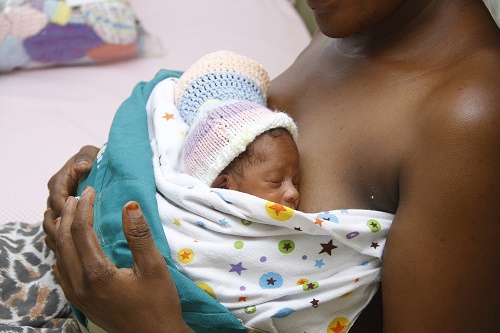

By Kakaire Ayub Kirunda | World Prematurity Day is commemorated on November 17 every year to raise awareness of the challenges and burden of preterm birth globally.
According to the World Health Organisation, preterm births occur when mothers deliver before the completion of 37 weeks of pregnancy; 15 million babies are born prematurely every year; approximately 1 million children die each year due to complications of preterm birth; many survivors face a lifetime of disability, including learning disabilities and visual and hearing problems; prematurity is the leading cause of death in children under 5 years. Coming home, an estimated 108,000 preterm births are registered in Uganda annually while 9830 children under the age of five are lost due to complications directly linked to preterm birth.
The theme for this year was “Born Too Soon: Providing the right care at the right time, in the right place” which calls for scrutiny into the quality of care offered to preterm babies everywhere including health and home settings. The national commemoration for Uganda took place in Busia District on November 20th under the same international theme. This commemoration comes at a time when newborn deaths stand at 27 per 1000 babies born alive (as per the 2016 Demographic and Health Survey) with preterm birth complications contributing to almost one third of these fatalities. Yet research shows that 86% of newborn deaths due to prematurity could be averted if known solutions reached every newborn. Similarly, studies have found that Midwife-led continuity of care reduces preterm birth by 24%.
The recent leakage of images of the dire state of newborn care at the Kawempe National Referral Hospital, which is meant to be a centre of excellence didn’t help matters. Many wondered and imagined what was happening elsewhere in the country. None-the-less, all hope is not lost, going by the presentations at a November 19 conference at Busia Youth Centre. From West Nile, Acholi, Busoga, Central Buganda, and Bugisu sub regions there are good signs that newborn care is improving. In this blog, I will pick out only a few of the showcased initiatives which I believe can provide some lessons to show that Uganda can offer timely and quality care to newborns and improve outcomes.
One initiative is the Maternal and Newborn Scale Up Project of Makerere University School of Public Health which has helped six high volume Health Centre IV facilities in Busoga start newborn care units through remodelling/reconstruction of spaces, refresher training, and provision of catalytic equipment and medicines. With the planned government policy of activating all Health Centre IVs to provide emergency obstetric care, having newborn care units to offer lifesaving standard care at such facilities is critical. On a recent sojourn to Kigandalo Health Centre IV in Mayuge District I got convinced that newborn care was indeed possible and already other facilities at the same level are making learning visits for some inspiration. What happens in these facilities can offer some lessons to government regarding newborn care at Health Centre IV facilities.
Another initiative is the approach taken by the Newborn Steering Committee of the Health ministry’s Maternal Child Health Technical Working Group which entails working with projects affiliated to international agencies to start newborn care units (NCUs) in hospitals where some equipment procured by Government has been wasting away. Under this initiative, some NCUs have been opened in the Acholi sub region with RHITES-North, Kamuli and Buyende with Plan International, Busia with World Vision International and soon in six Central Districts under the Clinton Health Access Initiative. This is done following guidelines from the “Reproductive, Maternal, Newborn, Child and Adolescent Health Sharpened Plan for Uganda” to forge standardisation. If more stakeholders can come on board, more subregions will be covered.
Regarding follow up care, which is a must in the case of premature babies, the component of community health extension workers comes into play. Kiwoko Hospital in Nakaseke District has good and tested follow-up system and the hospital is open to anyone interested in benchmarking their approach.
However, to sustain the current momentum, interest and gains from the above initiatives, a couple of things need urgent attention. Nurse or midwife-led newborn care will remain a dream if recruitment structure is not reworked to boost numbers in public facilities and avoid burnout. Government secured many oxygen concentrators which become useless amidst intermittent electricity supplies, which often results into preventable deaths. More oxygen cylinders need to be secured and the process of refilling them at regional referral hospitals eased. The problem of frequent stockouts of essential medicines for newborn care needs to be fixed as well for better outcomes. To the corporate entities that are into buying and donating incubators, newborn care is not all about incubators, monitors are required as well as comfortable kangaroo care beds which are lacking in most of these facilities.
*The author is a communication for development specialist. Email akakaire@musph.ac.ug
